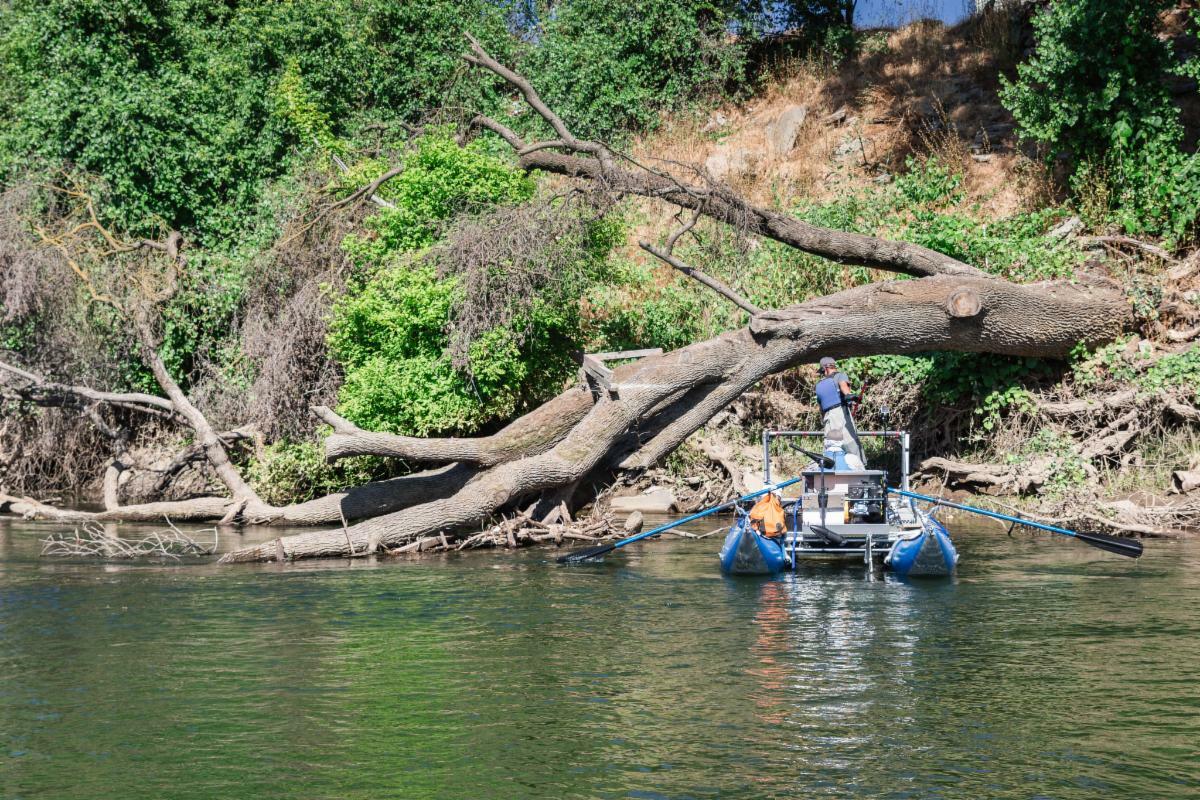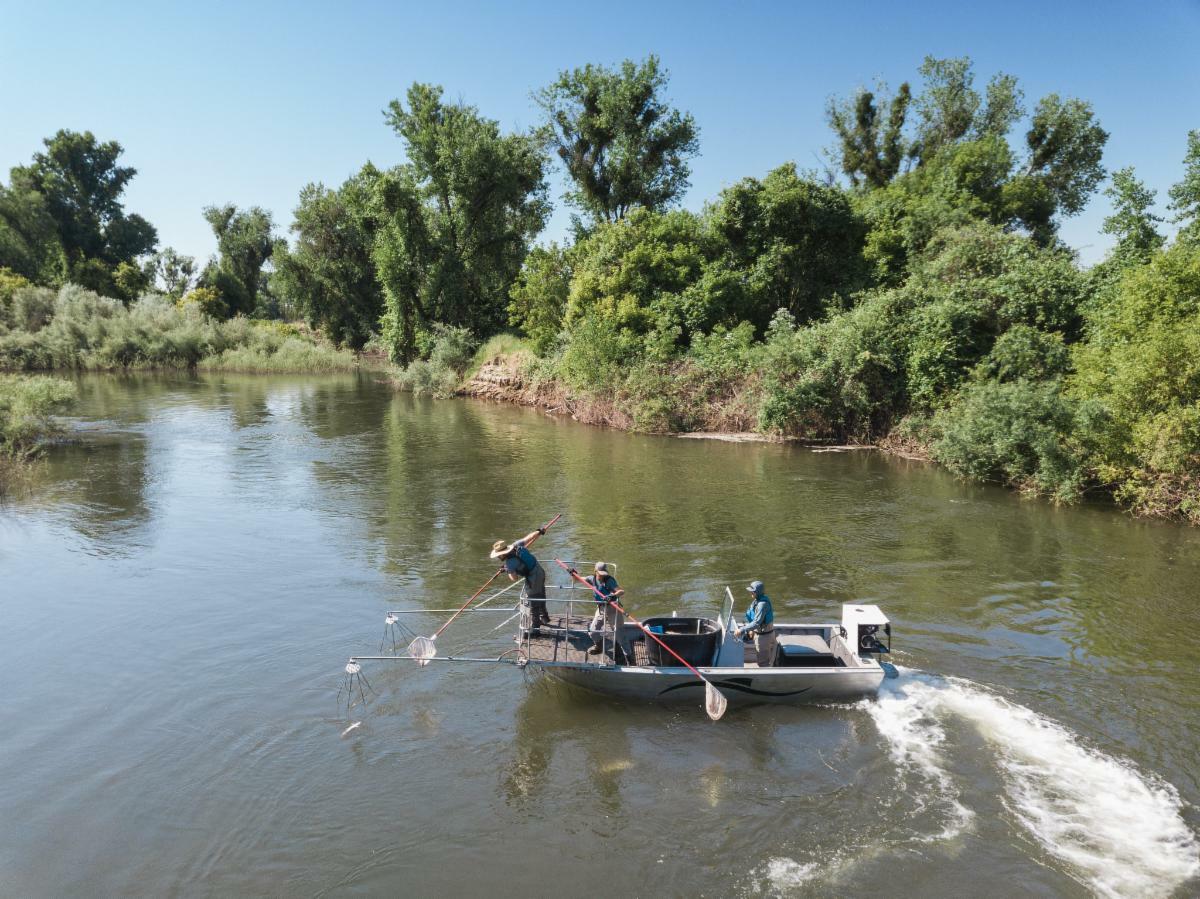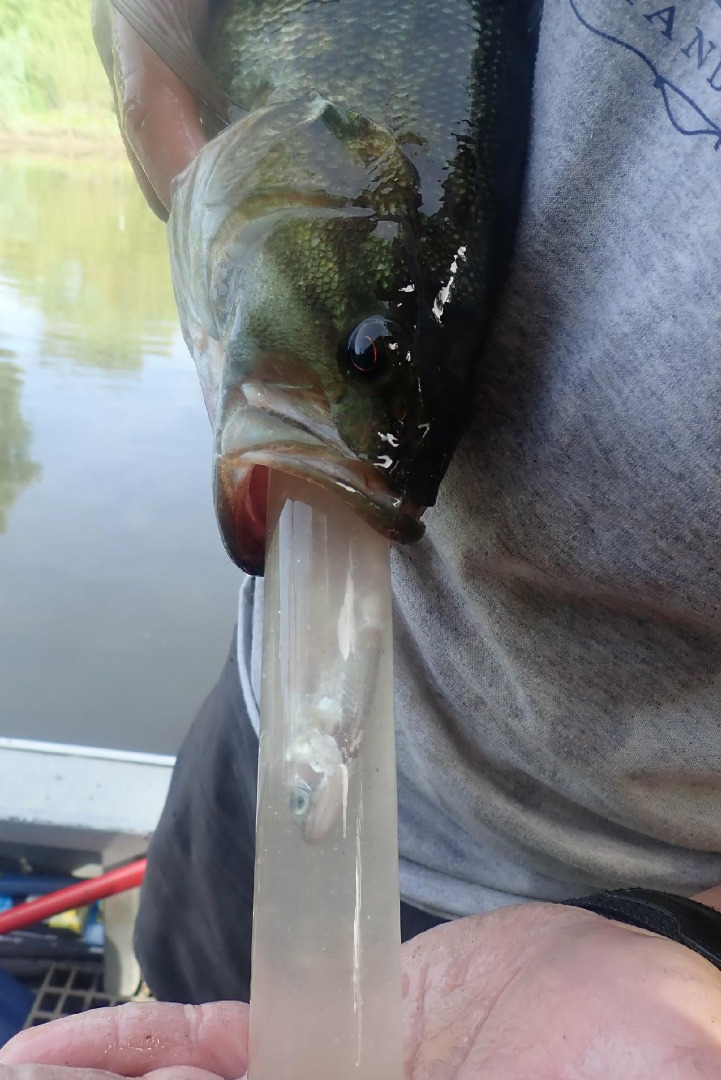From Sportfishing
Fish Report for 2-19-2024
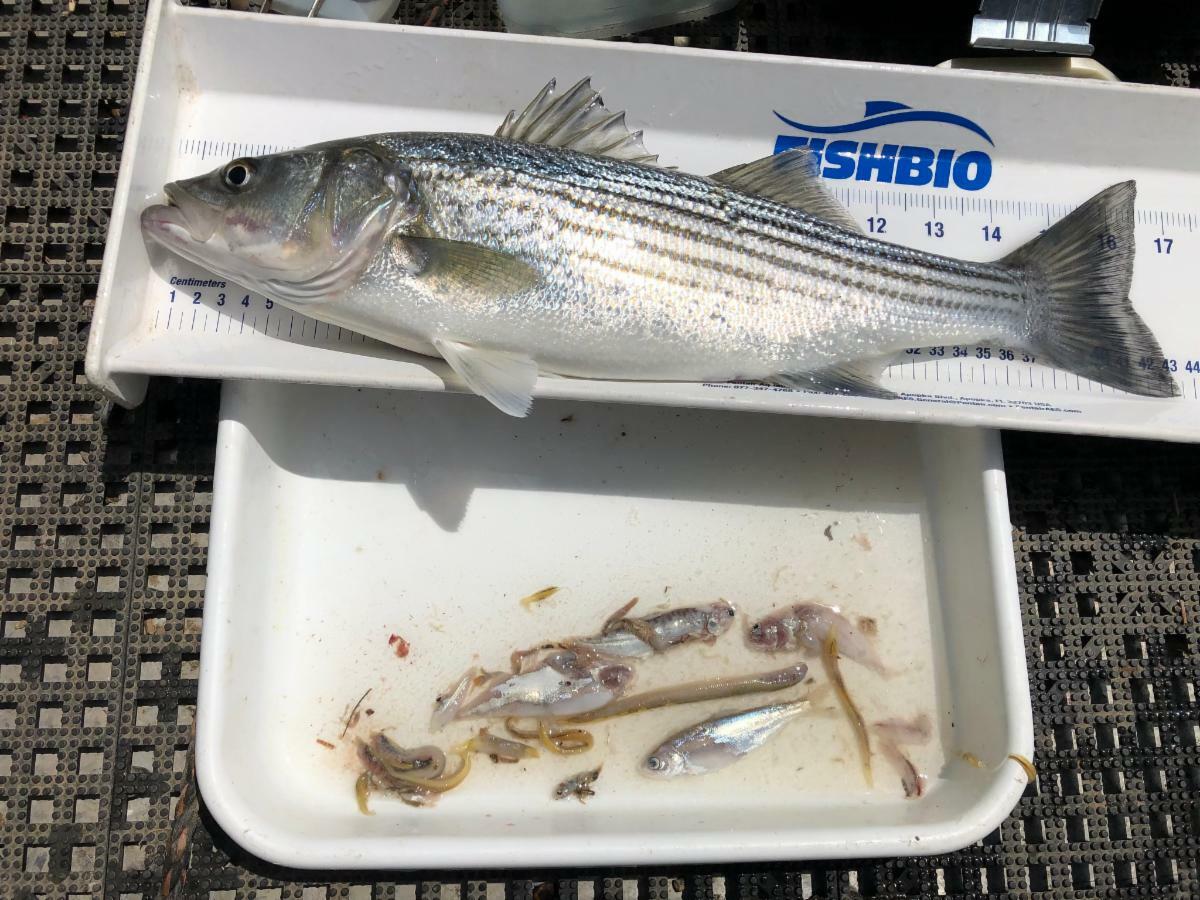
Salmon with a Side of Lamprey: Non-native Basses Primarily Eat Native Fishes in California's Stanislaus River
2-19-2024
FISHBIO
Salmon face many perils during their migration to the ocean, including disease, entrainment, degraded water quality, and predation. However, predation has been the factor that has generated the most interest and debate. FISHBIO has been conducting a research program focused on fish species that prey on other fish in the Stanislaus River to understand how predatory fishes may affect juvenile salmon migration. As part of the research program, FISHBIO asked, what’s on the menu for predatory fishes in the Stanislaus River? In an article published in the December 2023 issue of San Francisco Estuary and Watershed Science, FISHBIO scientists explained the results of examining three years worth of diet samples from over 20 predatory fish species (Peterson et al. 2023). The most frequently encountered predators were the non-native striped bass (Morone saxatilis) and black bass (multiple species in the genus Micropterus), and the native Sacramento pikeminnow (Ptychocheilus grandis). Analysis of their diet contents revealed that the non-native basses consumed native fish species such as fall-run Chinook salmon (Oncorhynchus tshawytscha) and Pacific lamprey (Entosphenus tridentatus) at significantly higher frequencies than native predators, which frequently consumed invertebrates like worms and flies.
Previous research showed that predation risk of juvenile salmon can be quite high throughout the Sacramento-San Joaquin Delta. However, studies investigating what these same predators dined on in the Delta found few salmon in stomachs. Instead, Delta predators feasted on non-native species like threadfin shad (Dorosoma petenense) and inland silversides (Menidia beryllina). In this paper, FISHBIO researchers suggest that the low frequency of salmon observed in predator stomachs in the lower San Joaquin River and Delta is because the prey base in those locations is dominated by non-native species. In contrast, further upstream, there are more native prey species. This is especially true in early spring when young salmon begin their migration downstream. Therefore, predation studies in these tributaries are essential to understand the true impact of predation on native species.
Past survival studies suggest that juvenile salmon experience higher survival in years with more water. Possible reasons for this include increased access to shallow floodplain habitat that predators cannot access, increased water volume and velocity to better avoid predators, and colder temperatures (which tend to make predators eat less). FISHBIO’s study examined diets from three years characterized by very different river flows. The first year, 2019, was considered a wet year with high flows and cool water temperatures, while 2020 and 2021 were dry years with low flows and warm temperatures. FISHBIO researchers sought to determine whether fewer predators would have salmon in their diets in a year with higher flows compared to years with low flows.
In total, FISHBIO crews captured and examined 2,844 predators, resulting in 1,653 diet samples from the fish whose stomachs contained prey. The native fishes that were on the menu included Sacramento sucker (Catostomus occidentalis), Sacramento pikeminnow, prickly sculpin (Cottus asper), and hitch (Lavinia exilicauda), with Pacific lamprey and Chinook salmon being the most frequently consumed. Notably, native fishes were consumed by predators – both native and non-native – an average of nine times as frequently as non-native prey fish. Black bass and striped bass consumed native prey at significantly higher frequencies than non-native prey in all years. Striped bass consumed salmon at similar frequencies in all years but consumed lamprey in higher frequencies during the dry years. Conversely, black bass consumed salmon at higher frequencies in the wet year compared to the dry years but consumed lamprey at similar frequencies across all years.
This study captures a more complete picture of where and when Chinook salmon are being eaten and by whom. An unexpected finding was that Pacific lamprey – which migrate around the same time of year as juvenile Chinook – are an important food source for both native and non-native predators. Although there is considerable data and numerous monitoring efforts focused on Chinook, very little is known about lamprey and whether their populations can sustain such heavy predation by non-native predators.
In addition to diet studies, FISHBIO has also been studying other aspects of predators in the Stanislaus River using mark-recapture approaches. By recapturing tagged predators, it’s possible to estimate their abundance, survival, and movement. Further, by developing occupancy models to track the predator presence across locations and seasons, FISHBIO researchers are seeking to learn when and where juvenile salmon may be most at risk of predation. Taken together, all of this information will help improve understanding of the threat that these non-native predators pose to Chinook salmon and other native fish populations.
FISHBIO is a dedicated group of research scientists, engineers, and technicians that specialize in counting, tracking, and analyzing trends in fish and wildlife populations throughout the world. An expert staff, technical capacity, and state-of-the-art equipment make FISHBIO a trailblazer in aquatic research. For more information, please visit FISHBIO.com
Photos
< Previous Report Next Report >
More Reports
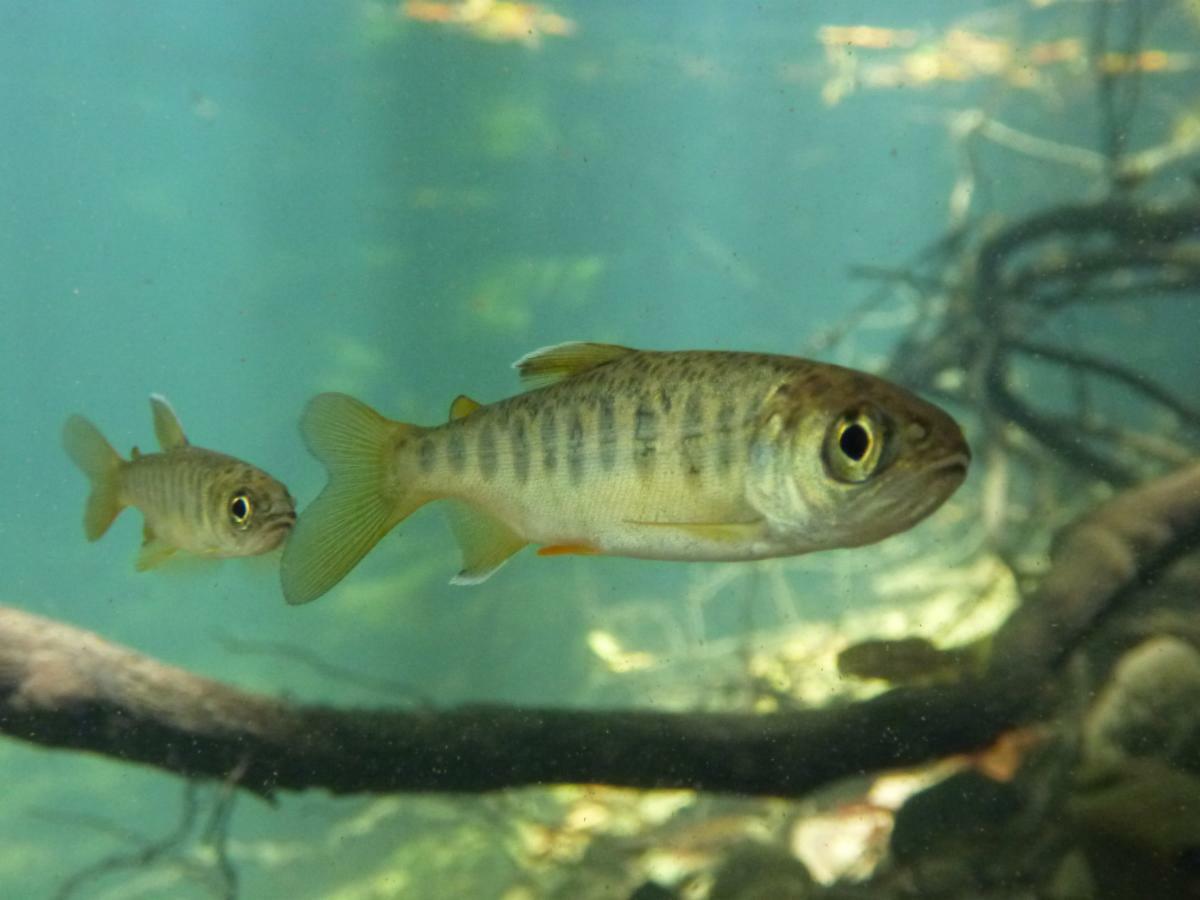
1-30-2024
Appearing in evolutionary records as early as the icy Pleistocene epoch, Oncorhynchus kisutch – better known as coho or “silver salmon” – have swum...... Read More
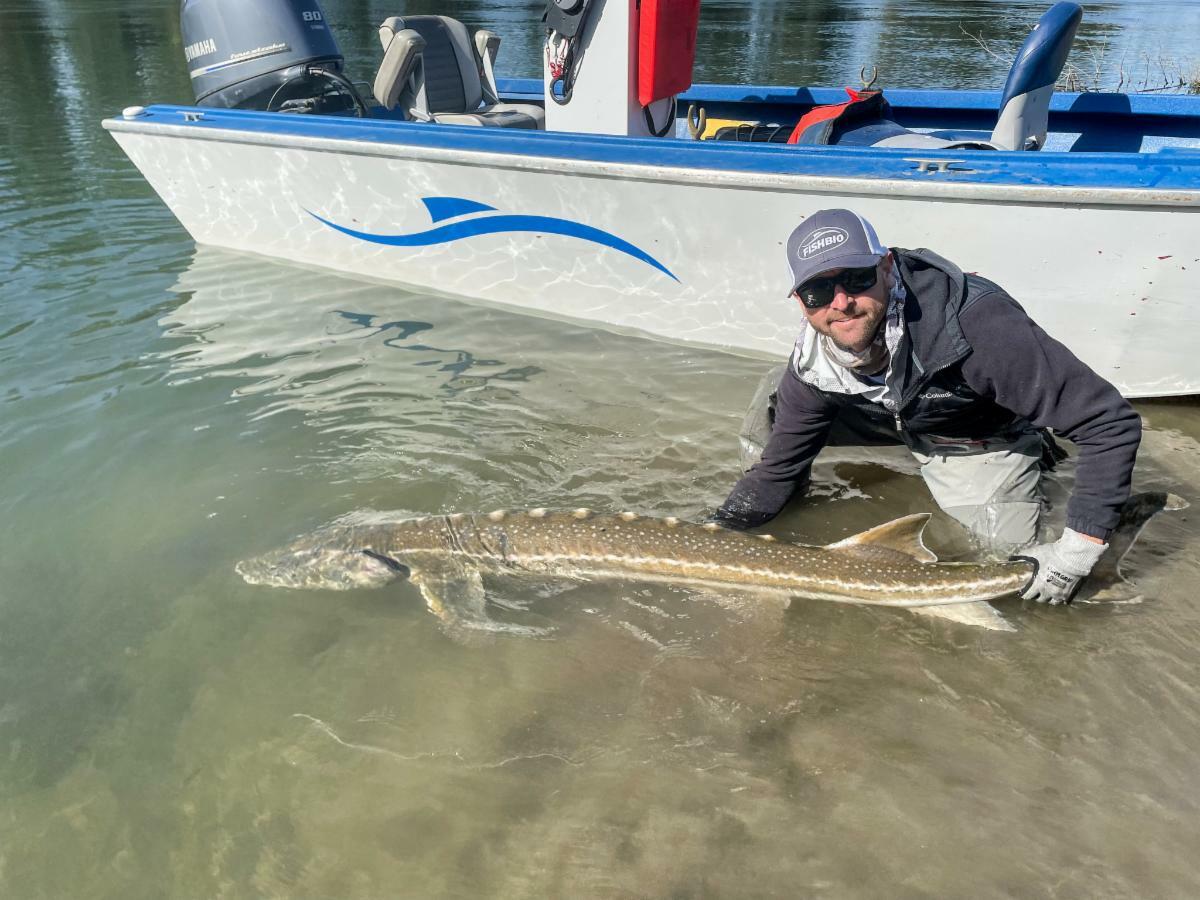
1-22-2024
Understanding an animal’s diet plays a key role in developing effective conservation and management strategies. Biologists typically collect data on...... Read More

Website Hosting and Design provided by TECK.net
